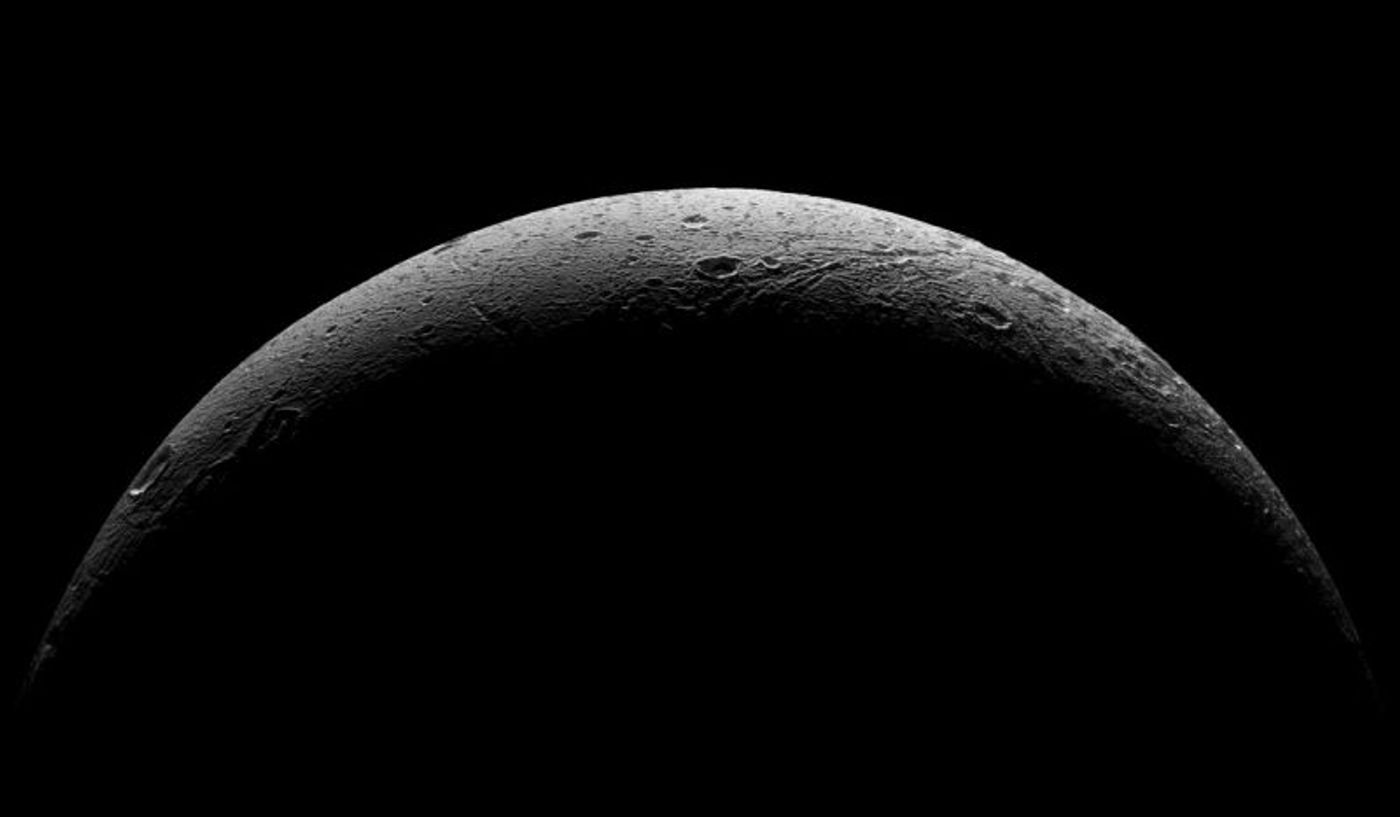Astronomers Believe Dione, Too, Has a Sub-Surface Ocean
Saturn has well over 60 moons, and interestingly, many of those, including Enceladus and Titan, seem to harbor what astronomers believe are sub-surface oceans. These moons exhibit qualities like spewing jets that have all but confirmed these sub-surface oceans.
If two moons weren’t enough, astronomers are now saying that Dione, another moon of Saturn, may also exhibit a sub-surface ocean some tens of kilometers below the surface, surrounding a rocky core. On the other hand, no liquid jets are present there.

Image Credit: NASA/JPL-Caltech/Space Science Institute
The findings appear in the Geophysical Research Letters and are brought into the light by data from NASA’s Cassini spacecraft, which recently took gravitational measurements of the moon. The figures have suggested Dione couldn’t possibly have been a solid rock. Instead, it was more in line with the qualities of liquid.
“For Dione, we did a similar gravity-topography analysis as was done for Enceladus in 2014, but with improved techniques,” Study lead author Mikael Beuthe said in a statement to Gizmodo. “Thus that’s the best evidence we have now for a present-day ocean on Dione.”
It seems this sub-surface ocean thing is becoming commonplace among not only the many moons circling Saturn, but perhaps throughout more parts of the outer solar system. At this rate, it wouldn’t be surprising if we were to find more out there somewhere in future space missions.
The idea behind a sub-surface ocean is there’s a hard crust on the surface that’s hiding sloshing liquid just miles below. On some of these moons, rotation and pressure act together to enable liquid jets to spew out from the surface, and NASA has observed these on some of Saturn’s moons during various space missions.
These oceans likely aren’t composted of pure liquid water like they are here on Earth, but they could be comprised of other various chemicals that may capable of supporting microbial life forms, which is why they’re of supreme interest to NASA.
According to the study, the fact that the sub-surface ocean on Dione touches both the underbelly of the surface and the core are critical to such interests:
“The contact between the ocean and the rocky core is crucial”, said Attilio Rivoldini, co-author of the study. “Rock-water interactions provide key nutrients and a source of energy, both being essential ingredients for life.”
Although it would take a long time to get a drilling spacecraft over to Dione to drill into the surface to look for a liquid ocean just beneath, new propulsion technologies are making their way into existence that could prove useful for missions just like this. SpaceX recently test-fired its new interplanetary Raptor engine and a researcher from Sydney wants to test his personal ion drive engine in space.
Indeed, it seems like bright times are ahead in terms of space exploration.
Source: Phys.org








